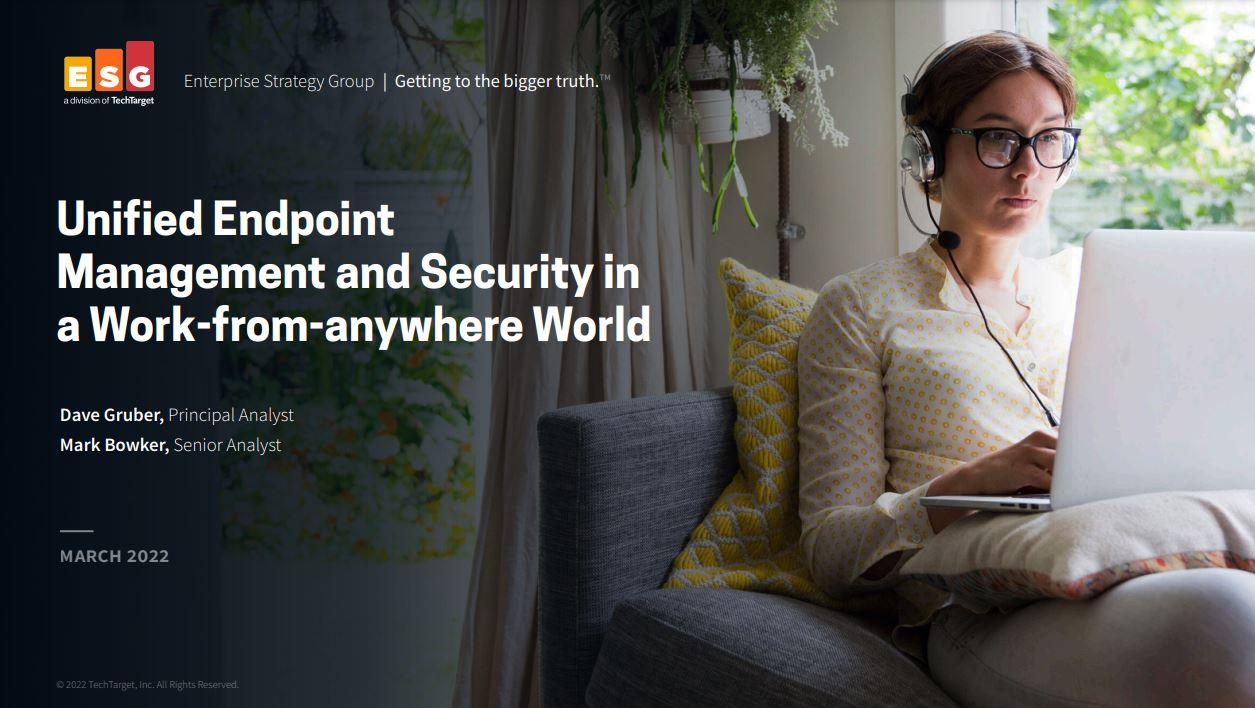How do IT leaders prepare for a refusal to return to the office?
With working from home likely to become a permanent option across many businesses, it's important to plan ahead as the end of lockdown is finally in sight

The government has laid out its roadmap for lifting COVID-19 restrictions, with 21 June the earliest possible date companies could consider returning all employees to the office.
For his part, Prime Minister Boris Johnson does not believe remote working will become the norm. Speaking about people not wanting to commute again or get back to face-to-face working life, he told a virtual conference: "I don't believe it. Not for a moment."
Contrast that to the boss of Unilever, who in January said his office workers will never return to their desks five days a week.
By and large, experts do agree hybrid working will stay 'a thing' but if staff refuse to come back in the same pre-pandemic numbers, how should IT leaders be planning? Should greater levels of remote access be offered even when COVID restrictions are gone? And if so, what are the implications?
Andrew Sellers, MD of Foundation IT, says: "The reality is we aren't going back to the office anytime soon, whatever is announced. The changes brought about by the new forced way of working will be permanent and largely we will all be better off as a consequence. There's still much to do to make sure that working from home actually works, though."
He adds: "Once the tolerance phase is over, we will see significant investment being made in helping people to WFH. By then the balance sheets will show for many that they are better off with people working as they choose.
"As we come out of this, more permanent decisions will be made to WFH and we will see an increase in investment for that purpose."
Get the ITPro daily newsletter
Sign up today and you will receive a free copy of our Future Focus 2025 report - the leading guidance on AI, cybersecurity and other IT challenges as per 700+ senior executives
Sellers could well be proved correct, according to figures from Harvey Nash's UK Tech Survey 2021. It found that 95% of IT professionals want to work two to five days a week from home after the pandemic, compared with only 42% of tech professionals doing so before it occurred.
The right software solutions must be adopted
Simon Wilson, CTO at Aruba UK&I, agrees employees will expect hybrid working to continue and for it to be a permanent option in the future. “The need for businesses to provide a professional remote working environment is non-negotiable; this goes well beyond the annual stipend typically spent on a keyboard, mouse or video conferencing aid,” he says.
"Agile, secure businesses require seamless, business-grade workflow tools that provide significant benefits to management and security. These provide much more control than business to consumer solutions as they allow for the separation of traffic in a network and can ensure the right applications are prioritised."
Data from ECI Partners' Growth Index 2020 found 28% of the UK's fastest growing businesses were planning to switch to permanent remote working and 43% planned to increase the flexibility of working from home. Only four in 10 said they planned to invest in more technology to support it, however.
Mayur Mistry, IT operations manager at mixer drinks brand Fever-Tree, explains IT budgets will have to be reprioritised, especially in terms of security. He says: "Budget will be spent on software that enables support, collaboration and efficiency but also hardware to keep employees comfortable working from home.
"There will also be an emphasis on security, which is where most of the budget will be spent. 2020 showed many organisations gaps in their security so this year they should … invest more in their security either on end points, on-prem and their cloud infrastructure."
He adds: "More employee cybersecurity awareness training is needed. We have increased it monthly and it shows by more employees highlighting phishing emails."
Listening to employees
According to Ricoh Europe's latest research, 63% of European employees trust their company will be more open to flexible working following the pandemic, meaning IT will need to find ways to match the IT requirements with this desire.
Mark Petty, of Littlefish, believes replacing users’ own hardware will be a priority, saying: "There are a lot of new devices in homes as a result of remote working, likely set up rapidly to accommodate the sudden work-from-home order.
RELATED RESOURCE

"IT budgets for 2021/22 will therefore likely need reviewing to cope with the increased pressure and demand on network security and cloud rollout more generally. Given the increased security risk from things like supply chain attacks, recently brought to the fore by the SolarWinds breach, BYOD culture is likely to phase out as businesses seek to take greater control over their infrastructure and endpoints."
Dan Harding, CEO at Sign In App, suggests the working world is facing “a complete reset", saying: "Hybrid working is here to stay and the right hybrid working model will fast become key to attracting and retaining talent.
"This is a shift in management culture as well as employee behaviour – and one that will require trust on both sides."
IT will look to implement technology that can, and will, create a safer and more flexible environment when an office or a desk is needed, Harding adds, changing the nature of why we go into a business premises to be around colleagues and clients.
"From collaboration to mentoring and simply sharing experiences, face-to-face contact will always be part of the mix, even if that is just a couple of days a month,” he explains.
"Companies will need to think hard about how they are going to entice people back into the office, once they are allowed. Whether it is fear or just a love of WFH, some people will need coaxing."
Jonathan Weinberg is a freelance journalist and writer who specialises in technology and business, with a particular interest in the social and economic impact on the future of work and wider society. His passion is for telling stories that show how technology and digital improves our lives for the better, while keeping one eye on the emerging security and privacy dangers. A former national newspaper technology, gadgets and gaming editor for a decade, Jonathan has been bylined in national, consumer and trade publications across print and online, in the UK and the US.
-
 DocuWare CEO Michael Berger on the company’s rapid growth
DocuWare CEO Michael Berger on the company’s rapid growthNews ChannelPro sat down with DocuWare CEO Michael Berger to discuss the company's rapid growth and channel strategy.
By Bobby Hellard Published
-
 Seized database helps Europol snare botnet customers in ‘Operation Endgame’ follow-up sting
Seized database helps Europol snare botnet customers in ‘Operation Endgame’ follow-up stingNews Europol has detained several people believed to be involved in a botnet operation as part of a follow-up to a major takedown last year.
By Emma Woollacott Published
-
 IT professionals aren’t budging on flexible work demands – and more than half say they’ll quit if employers don’t meet expectations
IT professionals aren’t budging on flexible work demands – and more than half say they’ll quit if employers don’t meet expectationsNews Analysis from Randstad shows 40% of UK-based IT pros have quit over a lack of flexible work options, while 31% of workers globally have done the same.
By Ross Kelly Published
-
 'The tide seems to be turning towards office attendance': 64% of hybrid business leaders want staff back in the office – but many worry that enforcing RTO mandates will drive employees away
'The tide seems to be turning towards office attendance': 64% of hybrid business leaders want staff back in the office – but many worry that enforcing RTO mandates will drive employees awayAnalysis Many UK business leaders want their staff back in the office more frequently, but they’re scared to implement return to office (RTO) mandates in fear of worker revolts.
By George Fitzmaurice Published
-
 Employees are dead set on flexible working arrangements – three quarters would turn down a role that didn't offer hybrid options as work-life balance becomes more important than pay
Employees are dead set on flexible working arrangements – three quarters would turn down a role that didn't offer hybrid options as work-life balance becomes more important than payNews New research shows workers are increasingly demanding flexible working arrangements from employers.
By Emma Woollacott Published
-
 Nearly half of tech workers are seeking new roles – declining employee benefits and reduced flexible working options have staff looking elsewhere
Nearly half of tech workers are seeking new roles – declining employee benefits and reduced flexible working options have staff looking elsewhereNews While salaries are rising for tech workers, other benefits are in decline, leading to a fall in job satisfaction
By Emma Woollacott Published
-
 Untethered: How CIOs and CISOs are paving the way for the new hybrid workforce
Untethered: How CIOs and CISOs are paving the way for the new hybrid workforceWhitepaper Effective techniques to transition from exposed legacy infrastructure to an effective zero trust strategy
By ITPro Published
-
 Unified endpoint management and security in a work-from-anywhere world
Unified endpoint management and security in a work-from-anywhere worldWhitepaper Learn how to converge endpoint management and security processes and systems to drive efficiency and reduce risk
By ITPro Last updated
-
 Why flexible working is critical to ensure talent retention
Why flexible working is critical to ensure talent retentionAdvertorial The changing face of flexible working will be the focal point of a webinar hosted by the Achievers Workforce Institute on July 12
By ITPro Published
-
 UK tech profit warnings at highest level since pandemic
UK tech profit warnings at highest level since pandemicNews Sector uncertainty has continued to dampen profits, with the percentage of firms delisting also having risen
By Rory Bathgate Published